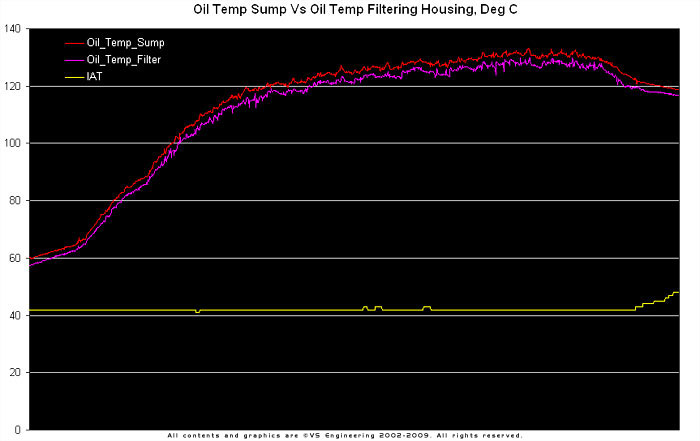

| This
project started in June 2009.
There has been some speculation regarding where to mount the oil temperature sensor. The sump area has often been debated to be the wrong location since BMW mounts its factory oil temperature sensor near the oil filter housing. Prior to this testing, I have advised people that the sump temperature will always be equal or higher than the oil filter housing location. Why so? Stagnant oil pool will have a higher temperature due to its rather static volume, ie flow is minimal to null. The oil filter housing location measures the temperature of moving oil. This results in a slightly cooler (or lower) oil temperature. I will refrain from posting pipe viscous flow mechanics. But in formulating the temperature relationship: T_(housing) <= T_(sump) I have to use the equality sign in order to satisfy initial conditions. Once transient state takes over, the strict < sign takes over. You can also think of the relationship as: T_(housing) + epsilon(t) = T_(sump) In which case, epsilon(t) is time dependent rather than a constant for the obvious. episilon (t) is bounded by 0 and +inf. The +inf is just for mathematical formality but of course, it is unlikely we see a T_(housing)= 40C and T_(sump)=1e6 C. To support this relationship, I have some data to illustrate. I have included the intake air temperature as a reference as well. The IAT on my car is located near the intake filter not in the intake manifold. It was a hot day at 42C. From my perspective, monitoring the higher bound, ie T_(sump), is more important. Reason is if you regard T_(housing) as the official oil temp, you are dealing with an unknown epsilon, which can be a huge variable, thereby a much higher T_(sump). Hence I always measure oil temperature from the sump area. If T_(sump) falls within your expected range, then you're guaranteed that T_(housing) will be lower at transient state.
|
 |